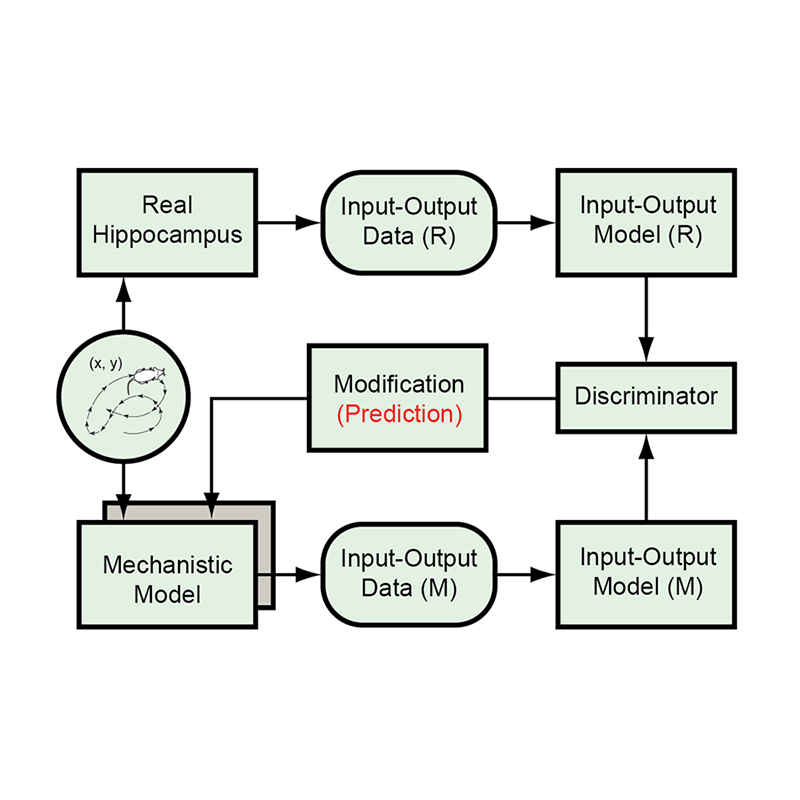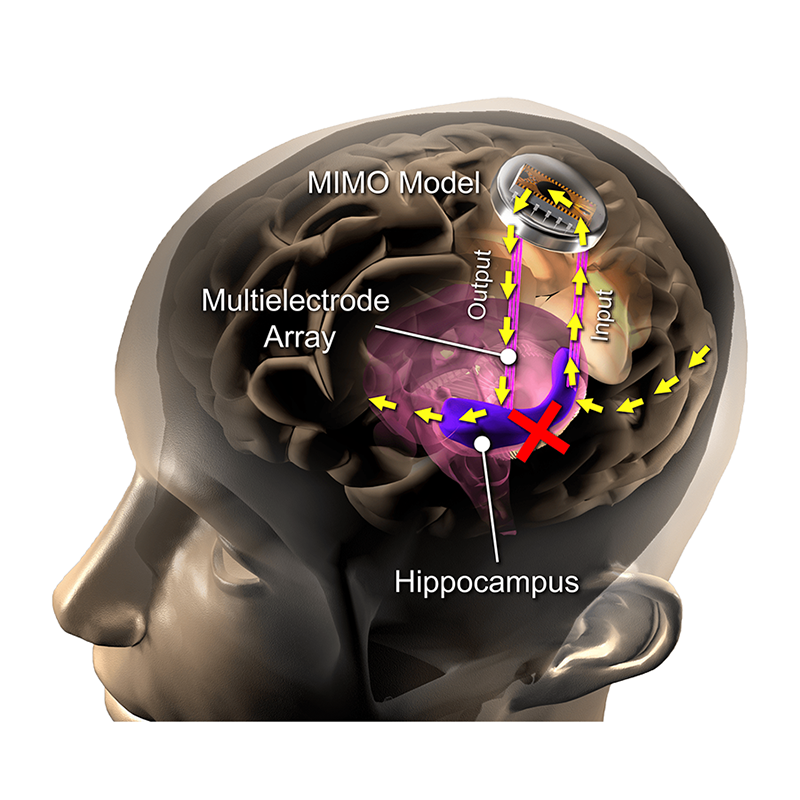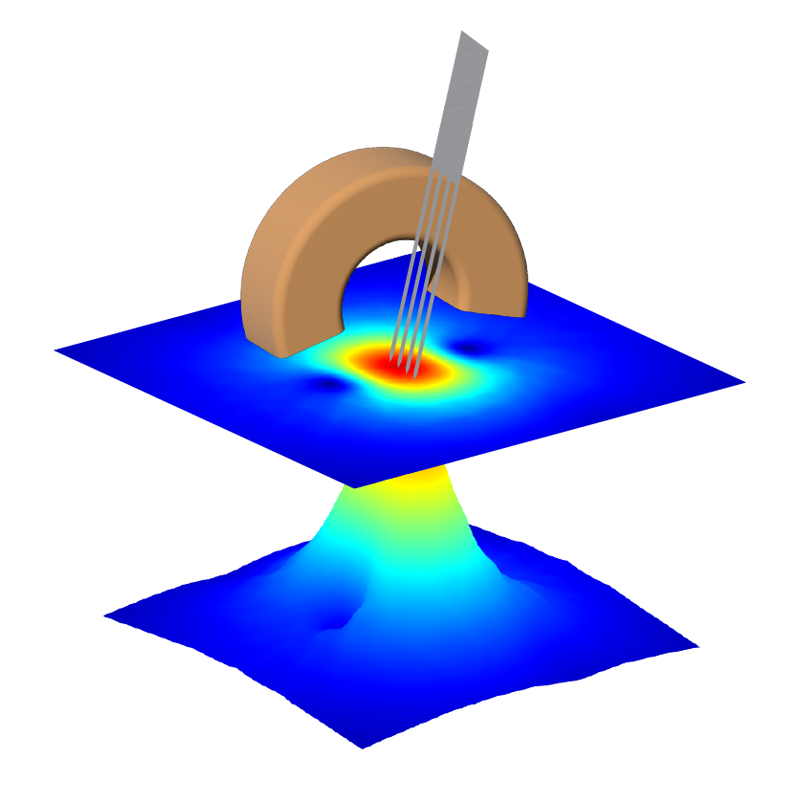
Combined Mechanistic and Input-Output Modeling of the Hippocampus
The goal of this project is to develop a novel modeling paradigm inspired by the generative adversarial network (GAN) to synergistically combine both mechanistic and input-output (machine learning) modeling techniques to build large-scale realistic models that are functionally indistinguishable from actual neuronal networks. We expect to use this combined mechanistic and input-output modeling strategy to unveil how causal relations between spiking activities across different hippocampal subregions, and place fields of hippocampal neurons, are determined by multi-scale neurobiological mechanisms and the interplay between these mechanisms. The proposed methodology will provide a general computational framework for integrating biological knowledge, hypotheses, and large-scale input-output data to gain deeper and more quantitative understanding of cognitive functions.
This project is supported by the NIH BRAIN Initiative (1RF1DA055665).

Large-Scale Recording and Stimulation in the Brain
The goal of this project is to develop next-generation neural interface technologies to enable simultaneous monitoring and manipulation of a large population of neurons in multiple regions of the brain during naturalistic behaviors and cognitive operations. These neural interface technologies are essential for performing in-depth investigation of neural plasticity and modeling of brain functions during naturalistic behaviors, and further building cortical prostheses to treat neurological diseases.
This project is supported by the NSF INSPIRE (CBET-1343193) and the NIH BRAIN Initiative (1U01NS099703, 1U24NS113647, 1U01NS126046)

Hippocampal Memory Prosthesis
Hippocampal memory prosthesis is a brain-machine interface device developed for restoring or enhancing memory function. It is designed to circumvent damaged hippocampal region by re-establishing the transformation of spike trains performed by a normal population of hippocampal neurons. To achieve this goal, we have developed (a) a multi-input, multi-output nonlinear dynamical model to mimic signal processing properties of hippocampal circuit, and (b) a double-layer multi-resolution classification model to decode memory contents from hippocampal activities. Such models serve as the computational basis of the hippocampal memory prosthesis. The hippocampal memory prosthesis has been tested in rodents, nonhuman primates, and human epilepsy patients performing memory-dependent behavioral tasks. Results showed that MIMO model-derived electrical stimulation delivered to the hippocampus can restore and enhance short-term and long-term memory functions.
This project was supported by the DARPA RAM program (N66001-14-C-4016).

Miniaturized TMS Coil
Transcranial magnetic stimulation (TMS) is a non-invasive technique widely used for neuromodulation. We design, fabricate, and test a miniaturized C-shaped coil that enables focal TMS and concurrent electrophysiological recording/stimulation. It provided a useful tool to investigate the neural responses and underlying mechanisms of TMS in small animal models. Using this tool, we have achieved significant modulatory effects on neural activities, behaviors, and cognitive functions in rodents.
This project is partially supported by the NIH BRAIN Initiative (1U24NS113647)

